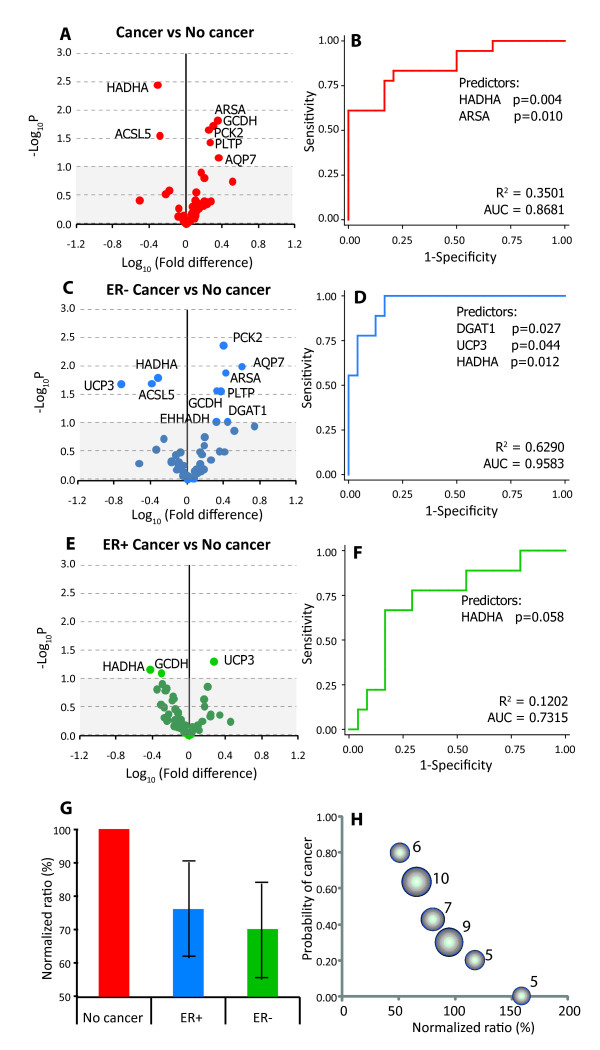Figure 1.
Association of fatty acid and lipid metabolism related genes with the risk of breast cancer. (A-F) Association analyses. Panels A, C and E show the volcano plots for cancer with no cancer, ER-versus no cancer and ER + versus no cancer comparisons, respectively. These plots depict the biological significance (log-fold change) on the X-axis and the statistical significance (-log P) on the Y-axis. Significance values above 0.1 are indicated by the grey shaded area in the volcano plots. Panels, B, D and F show the corresponding receiver-operating characteristic (ROC) curves for the final models from stepwise logistic regression analyses. The genes retained in the final model and their statistical significance is shown under the ROC curves, the variance explained by the model is shown as R2 and the predictive accuracy is indicated by the area under the ROC curve (AUC). (G) Comparative expression of the HADHA gene in the indicated study groups. Error bars indicate 95% confidence intervals. (H) Bubble plot showing the dose-response relationship between HADHA expression and the risk of breast cancer. Each bubble represents one of the six clusters generated using k-means clustering algorithm based on the HADHA expression. The radius of the bubble is proportional to the number of subjects in that cluster (indicated by numbers next to the bubbles).

